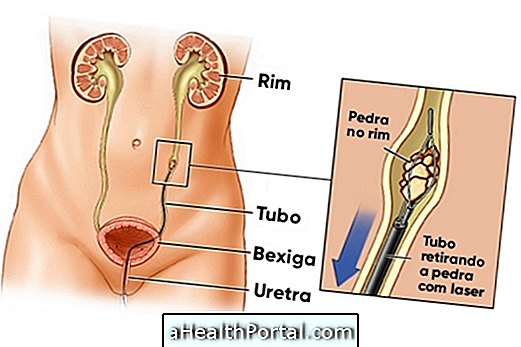There are two main types of nasal voice:
- Hypoanalasate : is the one in which the person speaks as if the nose is clogged, and usually happens in cases of flu, allergy or changes in the anatomy of the nose;
- Hyper-nasal : It is the kind of voice that usually bothers people more and that arises because of the habits of speaking developed over several years altering the way the air is misdirected to the nose while speaking.
One of the best treatments to correct any type of nasal voice is to be able to control the breath and train the ear to be able to identify which sounds are produced with the help of the nose or just with the mouth and then try to correct the way speech.
Therefore, it is best to consult a speech therapist to identify the possible cause of the nasal voice and initiate individualized follow-up sessions for each case.

3 ways to fix the nasal voice at home
Although the assistance of a speech therapist is necessary to correct the nasal voice, there are some tips that can help decrease the intensity with which the voice becomes anasalada and that can be kept at home, even when it is doing treatment indicated by the audiologist:
1. Open your mouth to speak
The nasal voice is very frequent in people who speak with their mouth almost closed, because this causes that the air does not leave only by the mouth, being also eliminated by the nose. In doing so, the sound ends up coming out more than normal.
Thus, people with a nasal voice should try to keep their mouths more open as they speak. A good tip is to imagine that you are holding an object between your teeth at the back of your mouth to prevent them from coming together and making sure your mouth is wide open.
2. Do exercises to strengthen muscles
Another good way to improve the way you talk and avoid the nasal voice is to practice strengthening exercises that are around the mouth and that participate in the act of speaking. Some ways to do this include:
- Slowly repeat the letters "explosive", such as P, B, T or G;
- Slowly repeat the "silent" letters, such as S, F or Z;
- Repeat the "a" / "an" sounds repeatedly to exercise the palate muscle;
- Use a flute to contract the muscles and direct the air to the mouth.
These exercises can be repeated several times a day at home and can even be done without actually having to produce sound, which allows them to be done while doing household chores, for example, without anyone knowing that you are training.
3. Lower the tongue while speaking
Another problem that is also often associated with the nasal voice is the rise of the tongue during speech, even when it should not be raised, producing a more nasal sound.
Although this change is difficult to identify, it can be trained. To do this, one should stand in front of a mirror, hold the chin with one hand, open the mouth and place the tip of the tongue on the front and lower teeth. After being in this position the word 'ga' should be said without closing the mouth and observing if the tongue descends when the 'a' is spoken or if it is still raised. If it is raised you should try to train until the sound comes out with your tongue underneath, because that is the correct way to speak.























